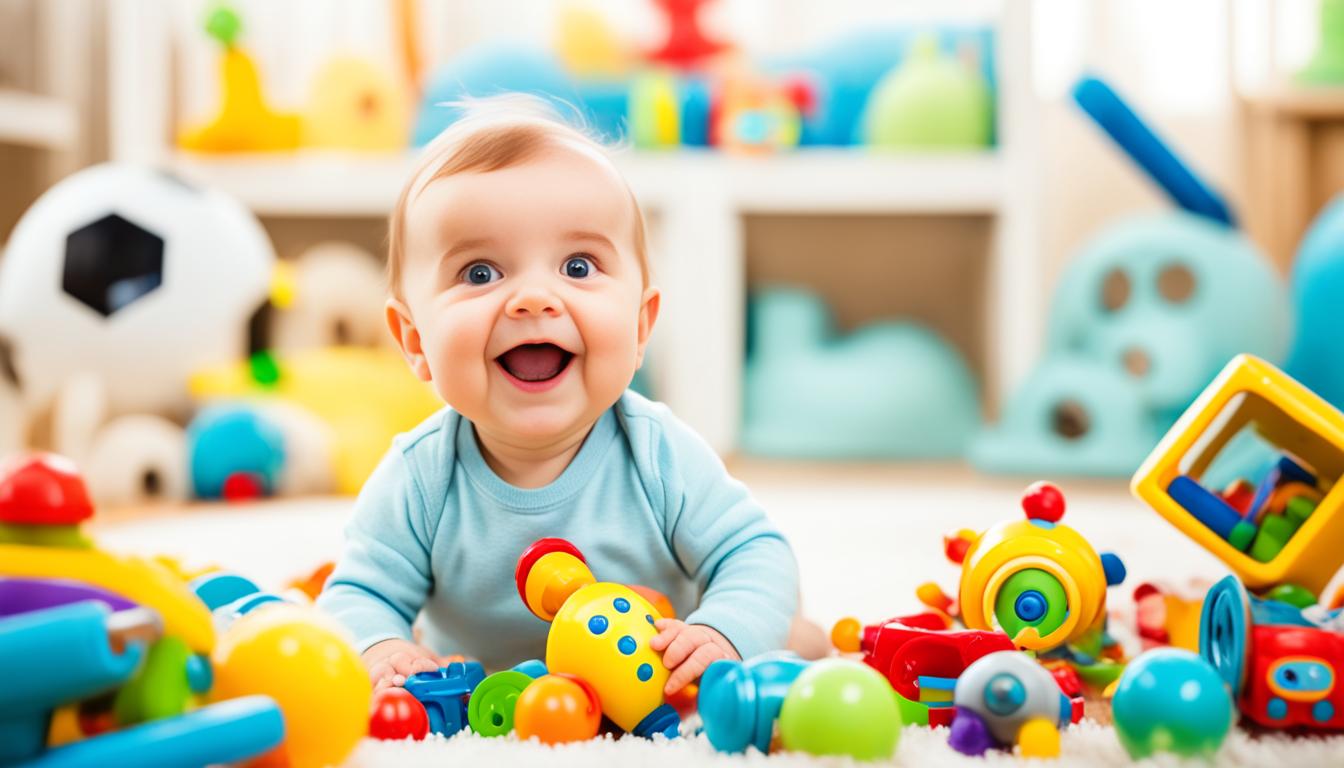In the third trimester, pregnant women often crave red meat and ice, which may indicate low iron levels. These cravings, along with physical and emotional changes, signify the final stages of pregnancy.
By week 30, your body undergoes big changes as your baby grows. You might see stretch marks and have back pain, sleep issues, and breathlessness. Your baby now resembles a large cabbage, has developing eyes, and is practicing breathing.
Embracing the final trimester means taking care of yourself and getting ready for motherhood. You’ll need more check-ups, focusing on a diet rich in iron, protein, calcium, and omega-3s. Try prenatal yoga or swimming to ease aches and keep fit. Plus, rest well to beat fatigue.3It’s not all physical; your emotions will change too. Hormones and less sleep can make you feel different, so mindfulness and self-care are key.2Getting ready for labor and delivery is a third-trimenster focus. Childbirth classes can teach you about labor, pain relief, breastfeeding, and caring for your newborn. They provide crucial knowledge and confidence.3This trimester can be physically tough. You might feel breathless and have heartburn. Joint pain, swelling, hair changes, and bladder pressure are common. These can make you uncomfortable.2Despite these challenges, remember to care for yourself and connect. Bond with your baby, enjoy activities that make you happy, and spend quality time with your partner before the baby arrives.2In conclusion, smooth sailing through trimester three involves understanding changes, putting your health first, preparing for birth, and looking forward to motherhood. Pay attention to your body and emotions. And always, follow your healthcare provider’s advice during this special time.
Key Takeaways:
- Cravings for red meat and ice may indicate low iron levels in the third trimester.1
- Physical changes include stretch marks, backaches, trouble sleeping, and shortness of breath.2
- Prenatal visits become more frequent, and a balanced diet with essential nutrients is crucial.3
- Gentle exercises, mindfulness, and self-care support overall well-being.2
- Childbirth classes help prepare for labor and delivery.3
Understanding the 30th Week of Pregnancy
At the 30th week of pregnancy, your body keeps changing as your belly gets bigger. This is to make space for your growing baby. You might see stretch marks and feel more back pain. It could also be hard to sleep and to breathe. These signs show your body is getting ready for the baby’s arrival4.
Now, your baby is as big as a large cabbage. Their eyes can focus, both inside and before they enter the world. This means they’ll be able to see your face from about 8 to 10 inches away after they’re born4. Also, your baby is getting ready to breathe on their own4.
Embracing the 3rd Trimester: What’s Next?
Congratulations on reaching the third trimester! This is an exciting yet challenging time as you wait for your baby. It’s very important to take care of your health during these months. Let’s look at what you should expect and how to get ready for your baby’s arrival.
Health Check-ups and Monitoring
Your doctor visits will become more frequent in the third trimester. These appointments help check on your baby’s growth and your health. Make sure you keep these appointments and talk to your doctor if you have any worries.2
Nutritional Needs for You and Your Baby
Good nutrition is key now to support your baby’s growth and keep you healthy. Eat foods rich in iron, protein, calcium, and omega-3s. These nutrients are very important for your baby. If you’re unsure, talk to a dietitian or your doctor to make sure you’re eating right.2
Exercise and Rest for Comfort
Prenatal yoga and swimming are good exercises to try now. They help ease pains and make your muscles stronger for childbirth. Always listen to your body and change your workout if you need to. Also, getting enough rest is crucial now. Try different sleeping positions and use pillows to stay comfortable.5
Preparing for Delivery
Now is a great time to get ready for your baby’s birth. Visit the hospital to see where you’ll give birth. Write a birth plan with your wishes for labor and after the baby is born. Childbirth classes are also a good idea. They teach you what to expect and how to stay calm and prepared. Taking these steps can help you feel less worried about giving birth.5
https://www.youtube.com/watch?v=ikcXKfUvpl8
As the third trimester moves along, know that you’re doing a great job getting ready. Take good care of yourself, eat well, and get ready to meet your baby. Talk to your doctor to get advice that’s just for you. Enjoy this special time as you get ready for motherhood!
Emotional Well-being: Preparing Your Mind
Caring for your physical health during pregnancy is key, but don’t forget your emotions. Pregnancy makes you face a whirlpool of hormonal changes and feelings. These can get too much sometimes. But there’s good news! You can try different ways to lessen stress and stay positive as you approach your baby’s arrival.
Mindfulness
Mindfulness brings you back to now, creating peace and alertness. It means paying close attention to your breathing, thoughts, and feelings. This helps cut down on stress and boosts your mood. To feel the benefits, just spend some time each day on deep breaths, meditating, or imagining peaceful scenes. It’s good for you now and gives you tools to help with parenting later.
Speaking with a Counselor
Talking to a counselor or therapist is a great step. They offer a safe place for you to share your worries and work through them. It can be a rollercoaster of emotions when you’re expecting. Counseling can give you insights, help you find ways to cope, and teach you how to handle stress and anxiety. Opening up about your feelings is a strong move for your emotional health.
“Keeping your emotional health in check while pregnant is vital. Using strategies like mindfulness, meditation, and counseling can help you deal with stress and keep a happy mindset in the third trimester.” 6
Meditation
Adding meditation into your daily life can do wonders for your emotions. Just taking a little time to quiet your mind and focus on breathing can ease anxiety. It brings a sense of calm and peace within. There are plenty of meditation guides online or on apps made for pregnant moms. You can easily find an approach that feels right for you.
By embracing mindfulness, meditating, and seeing a counselor, you can actively improve your emotional health during the third trimester. Pregnancy is a big change, and looking after your mental well-being is as valuable as taking care of your body.
Exploring Childbirth Methods and Pain Relief Options
As the final stage of pregnancy nears, it’s crucial to explore childbirth methods and pain relief options that suit your preferences and needs. Understanding your choices helps you craft your birth plan. Here are some options to consider:
Childbirth Methods
Childbirth methods offer a variety of techniques and philosophies to support women through labor and delivery. They include:
- Lamaze: Lamaze classes teach breathing techniques, relaxation exercises, and birth education to boost confidence during labor.
- HypnoBirthing®: This technique focuses on self-hypnosis and relaxation to lessen pain and improve the birthing experience.
- Water Birth: Water birth happens in a warm birthing pool, offering pain relief and a comforting setting for mother and baby.
- Active Birth: Active birth promotes moving and trying different positions during labor to reduce pain and encourage active participation in the birthing process.
Each childbirth method provides its unique way for managing pain and supporting labor. Research and talk with your healthcare provider to find the best match for your preferences.
Pain Relief Options
Various pain relief options can help handle discomfort during labor, such as:
- Epidural Anesthesia: An epidural gives medication into the spinal area, offering significant pain relief for a more comfortable labor experience. It’s a well-recognized pain management method during labor7.
- Narcotic Pain Medications: Drugs like pethidine are given through shots or IV to reduce labor pain. They might affect the baby’s ability to breastfeed and can lead to drowsiness, dizziness, or nausea8.
- Non-Pharmacological Techniques: Techniques like relaxation exercises, massage, and breathing methods offer natural pain relief. They work best when combined with other pain management strategies7.
- Nitrous Oxide and Oxygen (Entonox): Entonox, a mix of nitrous oxide and oxygen, is a gas breathed in during labor for pain relief. It is suggested for use during two to three hours of labor8.
Each option for pain relief has its own advantages and things to consider. Discuss these choices with your healthcare provider to understand the benefits and risks for your situation.
Birth Classes and Resources
To learn more about childbirth methods and pain relief, consider signing up for a birth class or looking for educational materials. Offered at hospitals and community centers, these classes cover labor, pain management, breastfeeding, and newborn care. They can boost your confidence and readiness for your due date.
“Childbirth is a miraculous journey. Knowing about different methods and pain relief options enables women to make choices that meet their unique needs and desires.”
Every woman experiences childbirth uniquely, and what helps one person may not help another. Keep an open mind, share your preferences with your healthcare provider, and feel empowered in your decisions. Exploring childbirth methods and pain relief options in the third trimester lets you actively shape your birthing experience.9

| Pain Relief Option | Method Description | Reference |
|---|---|---|
| Epidural Anesthesia | Administration of medication into the epidural space of the spine provides pain relief during labor | 7 |
| Narcotic Pain Medications | Intramuscular or intravenous administration of narcotics to alleviate pain during labor | 8 |
| Non-Pharmacological Techniques | Includes relaxation exercises, massage therapy, and breathing techniques as natural pain relief alternatives | 7 |
| Nitrous Oxide and Oxygen (Entonox) | Self-administered gas mixture used during labor for pain relief | 8 |
Coping with Physical Changes in the 3rd Trimester
The last part of pregnancy brings many changes as your body gets ready for your baby. Knowing how to deal with these changes makes your pregnancy easier. You might feel your organs being squished, joint pain, and swelling.
Organ Compression and Discomfort
Your growing baby can squash your organs, making you feel full and uncomfortable. You might get swollen, like in your legs, ankles, and face, because your blood flow slows down10. This swelling is normal, but if it’s really bad in your hands and face, it could mean something serious, like preeclampsia. If you have a headache, can’t see clearly, feel dizzy, or have stomach pain, you need to see a doctor right away10.
Shortness of Breath
As your baby gets bigger, it can push against your breathing muscle, making it hard to breathe10. This might happen more when you’re active or lying down. Taking short breaks and breathing deeply can help.
Joint Pain and Swelling
Pain and swelling in your joints are common later in pregnancy. This is because your body is getting ready for birth10. Doing gentle exercise and resting can make you feel better and move more easily.
Changes in Hair
Pregnancy can also change your hair, making it thicker or shinier, or you might lose some. These hair changes are only temporary and go back to normal after you have your baby10.
Pressure on the Pelvic Floor
Your baby’s weight puts pressure on the muscles at the bottom of your pelvis. This can feel uncomfortable and might make you leak a little when you laugh or sneeze. Doing Kegel exercises can strengthen these muscles and help with these issues10.
Changes in Blood Circulation
Your blood amount goes up during pregnancy to support your baby. This can change how your blood flows, leading to varicose veins10. Walking, raising your legs, and wearing special stockings can improve your blood flow and reduce discomfort.
Bladder Pressure and Frequent Urination
Your baby moving lower can press on your bladder, causing you to pee more often11. Even though you need to pee a lot, it’s still important to drink plenty of water. Just be ready for more bathroom visits, even during the night.
Heartburn
As your baby grows, it can push your stomach and cause heartburn. Eating less spicy and fatty foods, eating smaller meals, and sleeping propped up can ease this discomfort10.
Braxton Hicks Contractions
“Practice contractions,” or Braxton Hicks, get more common as you get close to your due date10. They might happen more often and feel stronger, but they usually don’t hurt and don’t mean labor is starting11.

When facing these changes in the last trimester, always listen to your body. Talk about any worries or strange signs with your doctor. They can offer advice and support, making sure you and your baby stay healthy and comfortable.
| Physical Changes | Statistics |
|---|---|
| Swelling/Puffiness | Can affect legs, ankles, hands, and face due to fluid retention and slowed blood circulation10 |
| Shortness of Breath | Increasing uterus size limits lung expansion for breathing10 |
| Joint Pain and Swelling | Common discomfort due to increased stress on the body during pregnancy10 |
| Changes in Hair | Can develop due to skin stretching during pregnancy10 |
| Pressure on the Pelvic Floor | The growing weight of the baby puts pressure on the pelvic floor muscles, potentially leading to discomfort or urinary incontinence10 |
| Changes in Blood Circulation | Varicose veins might appear on the legs during the third trimester due to increased blood circulation11 |
| Bladder Pressure and Frequent Urination | Pregnant women might experience more frequent urination due to increased pressure on the bladder as the baby moves deeper into the pelvis11 |
| Heartburn | Caused by the pressure of the growing uterus on the stomach10 |
| Braxton Hicks Contractions | Tend to occur more often and become stronger as you approach your due date11 |
Challenges and Tips for Sleep during Trimester 3
During the last part of your pregnancy, getting good sleep can be hard. You may feel uncomfortable, have hormone changes, and worry a lot. These things can make it tough to sleep well. But, there are ways to help you sleep better.
Understanding the Sleep Challenges
About 15% of pregnant ladies have restless legs syndrome (RLS) in their third trimester12. RLS makes your legs feel weird, like they’re tingling, and you want to move them. This feeling can wake you up, stopping you from getting comfy and sleeping well.
Snoring is another issue that affects roughly 30% of pregnant women12. Pregnancy can make your nasal veins swell, making it hard to breathe and causing snoring. Snoring might link to high blood pressure and sleep apnea in some cases12.
Also, aching backs and muscles are common late in pregnancy12. Your ligaments soften, and your joints get looser, which makes sleeping comfortably a challenge. Gaining weight can change your posture and increase pain, which also messes with your sleep12.
Tips for a More Comfortable Sleep
To sleep better during your third trimester, try these tips:
- Use pillows for extra support. Pillows can help support your belly, back, and hips. Try different ways of placing them until you find what’s most comfortable for you12.
- Find a good sleeping position. Sleeping on your left side is best now13. It improves blood flow to the uterus and helps with swelling. Avoid sleeping on your back, right side, or stomach to dodge health issues or discomfort13.
- Create a bedtime routine. Doing calm things before bed can help you relax and get ready to sleep. Try stretching gently, reading, or taking a warm bath12.
Using these tips can help you sleep better during this important time.

Remember, every pregnancy is different. What helps one person might not help another. If sleep problems keep bothering you, or if you’re worried about your sleep, talk to your healthcare provider. They can offer advice and support tailored to you.
Prioritizing Self-Care and Connection in the 3rd Trimester
The 3rd trimester is a crucial time for self-care. You need to care for both your body and mind as you get ready for your baby. Doing self-care routines and spending time with your partner can help a lot.
Bonding with your baby now is beautiful. You can read aloud, play music, or rest with your hand on your belly. This helps you and your baby feel close and calm.
Don’t forget to spend time with your partner, too. Doing fun things together strengthens your bond. It prepares you both for the new challenges and joys of being parents.
Self-care is very important right now. When you feel good, you take better care of your baby. Enjoy a warm bath or a long shower to unwind14. These moments help you deal with the 3rd trimester’s changes.
Creating a self-care routine is key. Include light exercise, writing in a journal, and staying hydrated. These habits build your strength, physically and mentally, for pregnancy15.
Looking after your emotional health is also vital. Pregnancy can make you feel many ways, from happy to worried. Speaking to a therapist or counselor is a strong move15. It gives you support and tools to feel better.
As you focus on self-care and connection, remember your journey is special. Listen to your body and trust yourself. By taking care of yourself and your relationships, you’re getting ready for a happy, healthy start to motherhood.
Preparing for Labor and Delivery
As the third trimester ends, getting ready for labor and delivery is essential. Make sure to pack everything you’ll need for the hospital. This includes comfy clothes, toiletries, and baby essentials like blankets and outfits. Being prepared reduces stress and last-minute worries.
It helps to make a birth plan to share with your healthcare team. Your plan can list how you want your birth to go, including how you want to manage pain and what birthing positions you prefer. Also, include any cultural or religious wishes. A good birth plan makes you feel in control and empowered.
Note: It’s common for moms-to-be to create a birth plan to communicate their wishes for labor and delivery6.
Learning how to relax is key when getting ready for labor. Try breathing exercises, guided imagery, and mindfulness to lessen pain and anxiety. Practice these methods during pregnancy so they’re easy to use later.
Every labor and delivery story is different. Having a positive mindset and good support is very important. Talk to your healthcare provider with any questions or worries. They’re there to help and support you as you become a mother.
Final Weeks of Pregnancy: Reflecting and Embracing the Journey
The last weeks before you meet your baby are full of excitement and memories. It’s a time to celebrate your strength and the amazing changes in your body. It’s also a moment to get ready for motherhood. Feeling tired or worried is normal, but try to enjoy these times and talk to your doctor if you need help.
Looking back on your pregnancy can be very meaningful. Remember the physical and emotional changes you’ve gone through. Think about the hard times you’ve faced and how you’ve grown. This reflection can make you appreciate your journey more and see how strong you are16.
Getting closer to your baby is special during these weeks. Spend time each day bonding with gentle touch or talking and singing. These moments can make you feel peaceful and ready for being a mom16.
You may feel many different emotions now, from happiness to worry. Your body is going through a lot, which can make your feelings change often17. It’s okay to feel this way. Taking care of yourself and doing things like writing, reading, or meditating can help you find calm and self-awareness16.
If you’re finding these weeks tough emotionally, reach out for support. Talk to your doctor, partner, or friends. It’s normal to have these feelings, and asking for help shows you care about yourself and your baby17.
Embracing Tranquil Activities
Finding peace in the final weeks means doing relaxing activities. Writing, reading, and meditating can bring calm during this busy time16.
A pregnancy journal is a great way to express your thoughts and emotions. It captures the special moments of this journey. Reading uplifting books can also give you encouragement and a nice break16.
Meditation helps clear your mind and relax. Even a few minutes a day can make a big difference. There are apps and videos for pregnant women that can guide you16.
Self-care is key as you get ready for your baby. Taking time for physical, emotional, and mental health is important. By reflecting, bonding with your baby, and finding peaceful activities, you’ll feel prepared to welcome your new arrival.

Conclusion
In conclusion, Trimester 3 is a key and transformative time in pregnancy. It’s crucial to understand the changes happening to you. Regular prenatal check-ups,18pelvic exams, and keeping an eye on your baby’s growth are essential. These steps help keep both you and your baby healthy. During this time, your baby gets bigger and matures, hitting important milestones.
Feeling warmer, swelling, and back pains are common symptoms. Looking after yourself and getting help from doctors is important.
Also, routine ultrasounds can show how your baby is growing. This can help you feel closer to your little one.19Focus on self-care, get ready for birth, and enjoy the ride. Make sure to get advice from your doctor. Embrace the excitement of becoming a mom.
Face this journey with confidence. Know that you’re ready for the wonderful adventure of motherhood that awaits.
FAQ
What physical changes can I expect in the 30th week of pregnancy?
How often should I have prenatal visits in the 3rd trimester?
What should I focus on in my diet during the 3rd trimester?
Are there any exercises I can do to relieve aches in the 3rd trimester?
How important is rest in the 3rd trimester?
What can help me manage stress in the 3rd trimester?
When should I start exploring childbirth methods and pain relief options?
What are common physical changes in the 3rd trimester?
How can I improve sleep quality in the 3rd trimester?
How can I prioritize self-care in the 3rd trimester?
How should I prepare for labor and delivery?
How can I reflect and embrace the final weeks of pregnancy?
Source Links
- https://elisabethtavierne.medium.com/my-pregnancy-journey-third-trimester-with-my-2-0af72939dfb7
- https://www.bumpsandburpees.com/blog/embracing-the-journey-navigating-the-changes-in-your-body-during-the-3rd-trimester
- https://sleepybelly.co/blogs/blog/the-exciting-journey-navigating-your-30th-week-of-pregnancy-and-beyond-1
- https://www.nhs.uk/start-for-life/pregnancy/week-by-week-guide-to-pregnancy/3rd-trimester/week-30/
- https://www.palmers.com/blog/embracing-the-bump-self-care-during-pregnancys-third-trimester-n116
- https://www.themotherbabycenter.org/blog/2022/09/third-trimester-checklist/
- https://www.ncbi.nlm.nih.gov/pmc/articles/PMC6543627/
- https://www.healthlinkbc.ca/pain-relief-options-labour-and-birth
- https://www.mhs.net/blog/2023/08/7-natural-pain-management-options-for-labor-and-delivery
- https://familydoctor.org/changes-in-your-body-during-pregnancy-third-trimester/
- https://www.mayoclinic.org/healthy-lifestyle/pregnancy-week-by-week/in-depth/pregnancy/art-20046767
- https://www.webmd.com/baby/sleep-better-during-third-trimester
- https://www.sleepfoundation.org/pregnancy/sleeping-during-3rd-trimester
- https://www.coffeewithsummer.com/pregnancy/self-care-pregnancy/
- https://riyahspeaks.com/embracing-motherhood-my-journey-towards-self-care-during-pregnancy/
- https://goodformama.com/blogs/news/last-month-of-pregnancy-transitioning-expanding-and-tapping-into-divine-energy-through-my-morning-routine
- https://community.whattoexpect.com/forums/3rd-trimester/topic/emotions-towards-the-end-of-pregnancy-162154233.html
- https://www.stanfordchildrens.org/en/topic/default?id=third-trimester-85-P01242
- https://www.ncbi.nlm.nih.gov/pmc/articles/PMC6720093/
- https://pharmeasy.in/blog/guide-to-the-third-trimester-of-pregnancy-for-expecting-moms/










